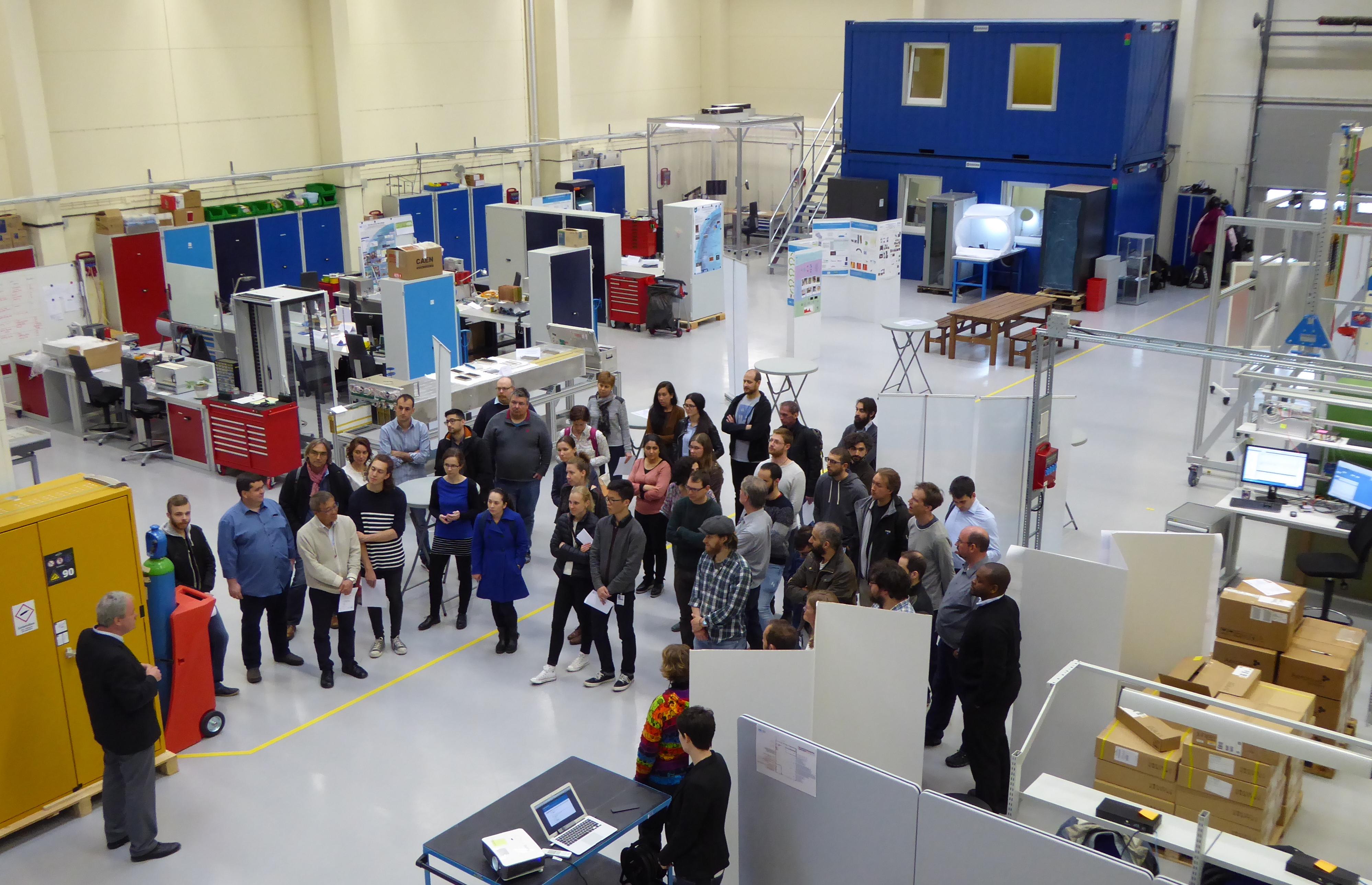Utgårt: The Shared Workspace Driving Collaboration at ESS

Located just north of the main ESS Headquarters, a new shared workshop and laboratory named Utgårt has been opened. The name comes from Norse mythology after Útgarðar, which means a castle, home to the giants. It may not yet house giants but it is certainly a home for the Detector, Scientific Activities and Integrated Control Systems groups that come together in a 790m2 shared facility to test and build hardware and software for ESS.
The inauguration welcomed colleagues and partners for an evening to celebrate the completion of the shared spaced. During the event individuals from the groups explained the progress of their work at their respective stations to give the guests insight into their daily business. With about 50 persons attending, this made for a very interactive evening.
Despite some initial challenges in getting the facility up and running, all groups have now moved in and are testing and building for ESS. The Detector Group, which uses nearly half the space, is constructing and testing prototypes of the Detectors that will be used in the ESS suit of instruments. So far about 5 detectors have been built in the workshop. In particular the new detector for reflectometry, Multi-Blade, that will fully utilize the brightness of the source beam; Multi-Grid, which will address the large area of Chopper spectometers; and multi-wire proportional test chambers for the development of the B10 technology. Upcoming developments include the SoNDe detector for SANS and neutron beam monitors for the entire ESS facility.
The Scientific Activities Division are developing, building and testing a mock-up of the various sample environment equipment to be used in the instrument halls. Access to well-equipped laboratories for sample production, handling, condition, characterisation and storage in close proximity to the instruments is a prerequisite for successful neutron experiments.
The most recent addition to the workshop is the team from Integrated Control Systems which are developing control software for the ESS instruments and instrument technologies that will be deployed on site.
The workshop is not just a place where the various groups can get their hands dirty start building the technology and equipment needed for ESS, it is also a space where a lot of interaction and overlap takes place which is essentially facilitating the collaboration between the groups and ESS as a whole.
"The decision to share the workshop with other groups has greatly benefited us, not just in terms of cost sharing but rather in the exchange of experience and knowledge. We are looking forward to fostering that culture and possibly even expanding it in the future.”




 is funded by the European Union Framework Programme for Research and Innovation Horizon 2020, under grant agreement 676548.
is funded by the European Union Framework Programme for Research and Innovation Horizon 2020, under grant agreement 676548.